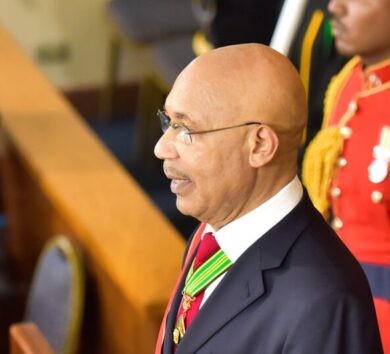
· US$140.2 in IMF SRD million to bolster reserves

The Central Bank of The Bahamas’ (CBOB) foreign reserves have grown to US$2.75 billion, supported by the IMF’s allocation of special drawing rights (SDR).
The Bahamas was allocated 174.8 SDRs, which converts to about US$247.5 million at a 0.05 % interest rate. In its monthly economic report, the CBOB revealed in its Monthly Economic and Financial Developments (MEFD) report for August 2021 that it has used US$140.2 million to bolster reserves.
The move to shore up reserves comes ahead of the final quarter of the year, which typically places a heavier strain on foreign reserves. The Bahamas gets the bulk of its foreign currency from tourism, which has seen steady improvement month over month since the start of the year, but remains significantly lower than pre-pandemic levels.
- Net purchases from the public slowed down
The CBOB’s net purchase from the public sector slowed to US$193.4 million from US$225.6 million in the previous year. Meanwhile, the bank’s net sale to commercial banks tapered to US$57 million from US$86.6 million in 2020.
Commercial banks’ net sale to their customers decreased to US$65.7 million from US$95 million a year earlier. Nonetheless, domestic foreign currency credit continued to shrink in August, contracting by US$24 million, represents a drastic increase from the nearly US$4 million decline recorded during the same period in 2020.
“Specifically, the decrease in private sector credit deepened to US$10.9 million from US$2.5 million in 2020, as mortgages reduced by US$7.6 million, extending the US$0.3 million falloff a year earlier, while commercial credit fell further by US$3.3 million, surpassing the US$2.1 million downturn in 2020,” the CBOB reported.
Conversely, net claims on the government grew by US$2.4 million, although a moderation from the US$39.5 million expansion a year earlier. Further, credit to the public corporations reduced by US$15.5 million, a slowdown from the US$40.8 million retrenchment last year.”
- Shoring up reserves
The move to shore up reserves comes ahead of the final quarter of the year, which typically places a heavier strain on foreign reserves. The Bahamas gets the bulk of its foreign currency from tourism, which has seen steady improvement month over month since the start of the year, but remains significantly lower than pre-pandemic levels.
According to the CBOB, “although private sector net foreign currency drawdowns are forecasted, due to a falloff in inflows related to lackluster tourism sector activity and higher imports to aid reconstruction work, external reserve balances are anticipated to end the year at a higher level than in 2020, underpinned by the government’s external borrowing activities. In this context, external balances are expected to remain more than adequate to sustain the Bahamian dollar currency peg.”
The IMF general SDR allocation was equivalent to about $650 million and made available to all 190 of its member countries to address the long-term global need for reserves and to particularly help vulnerable countries struggling to cope with the impact of the COVID-19 crisis.
This general SDR allocation, which was approved by the board of governors of the IMF, and is the largest allocation in the history of the fund, was approved on August 2 to boost global liquidity.
The newly-created SDRs were credited to IMF member countries in proportion to their existing quotas in the fund.







Comments